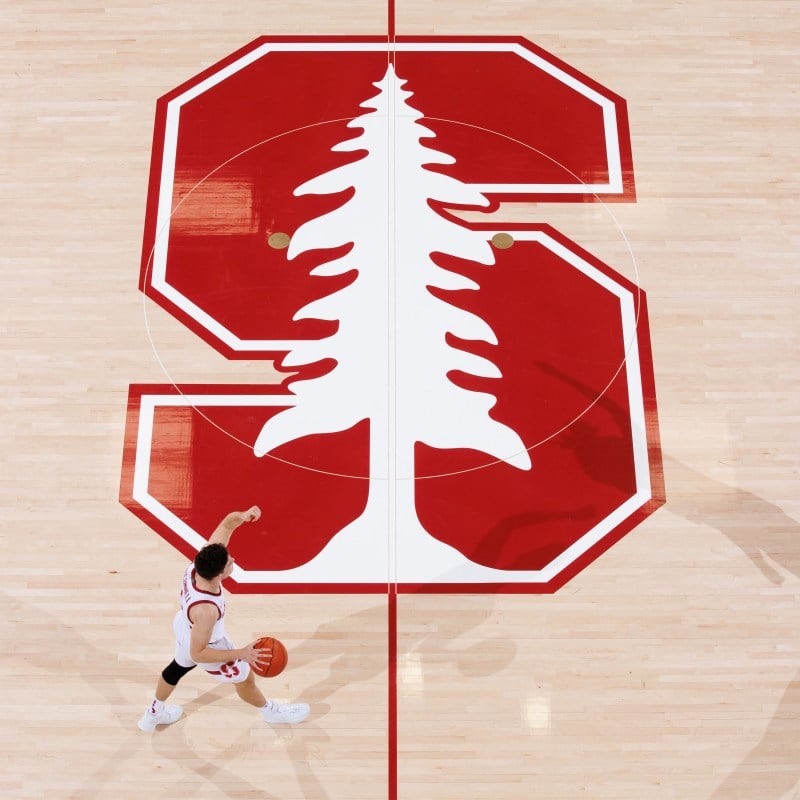“If the NCAA doesn’t completely reform itself, it’s toast,” argued Roger Noll, an emeritus professor who researches the economics of sports and entertainment.
Each year, Division I athletics generate billions of dollars in revenue. Many college athletes are starting to question whether a scholarship is adequate compensation for their contributions.
According to Noll, a member of the Advisory Board at the American Antitrust Institute, the NCAA is directly violating antitrust laws by price fixing through horizontal collusion. In other words, the NCAA is operating as a cartel, Noll said.
Echoing Noll, Megan Olomu, a senior women’s sprinter and co-president of the Student-Athlete Advisory Committee (SAAC), raised concerns about the NCAA’s justification for compensation limits, amateurism, or the idea that it’s an activity not a busines.
“People are paying significant money to watch a sport streamed on their network. That inherently makes it a business,” said Olomu. “It has always been about money, but now more than ever. So are the people at the root of that money generation actually being compensated?”
Several recent cases against the NCAA raise this question, including the National Labor Relations Board (NLRB) ruling that members of the Dartmouth men’s basketball program are employees. For Noll and Olomu, it is no longer a question of if student-athletes should be properly compensated, but a matter of when.
Several student athletes are at the front of advocacy for direct compensation to athletes, especially Nya Harrison, a junior defender on the women’s soccer team and a key plaintiff in an antitrust lawsuit against the NCAA and Power 5 Conferences. Alongside DeWayne Carter, a football player at Duke University, and Sedona Prince, a women’s basketball player at Texas Christian University, Harrison hopes to void NCAA bylaws and rules that restrict compensation to Division I college athletes.
While some view the lawsuit they started as a bold move, “I honestly think it’s the bare minimum,” Harrison said.
“If people working a normal job were under the demands, time constraints, and travel circumstances that we go through, they would fight for a raise.”
Compensation also disproportionately affects athletes from marginalized backgrounds, according to Liam Anderson, a graduate runner on the cross-country team and former SAAC co-president. Lack of direct compensation should also be regarded as a civil rights issue, Anderson said.
He pointed to the NCAA’s highest revenue-generating sports: football and men’s basketball. “The two sports that generate the most money are predominantly Black, predominantly lower income, at least relative to college populations and student-athlete populations,” Anderson said. “When you look at the demographics of the sports that are currently being exploited, it is absolutely a civil rights issue.”
Harrison agreed that compensation was directly tied to equity issues. The NCAA uses “Black bodies because they can do it for free,” Harrison said. “As soon as money comes into play, they say no.”
In its defense, the NCAA insists that paying student-athletes will detract from the college experience.
But Anderson argues that athletics define the college experience for student-athletes, especially football players. “They’re already doing that work,” Anderson said. “By compensating them, you’re just making sure that they’re taken care of.”
“The 40 to 50 hours a week that they’re spending, on training, medical treatment, recovery, film, on all of the things that they have to do to be successful in their sport. That is more than a full-time job already,” Anderson said.
While Stanford student-athletes debate the model of compensation, several believe they should receive some form of direct payment.
For Anderson, the ideal involves athletes “receiving compensation as close as feasibly possible to what they would receive in a free and competitive labor market.”
As the landscape of collegiate athletics continues to evolve, for many, the NCAA’s viability hinges on its willingness to compensate athletes.
